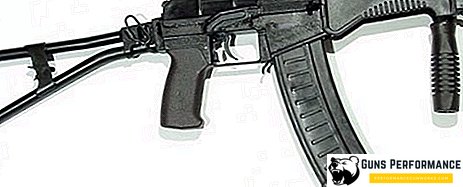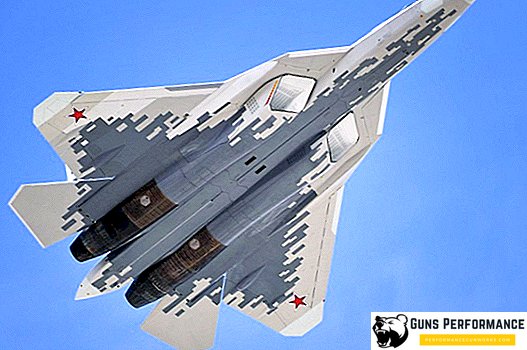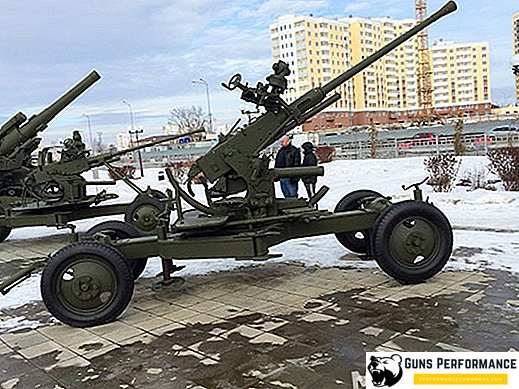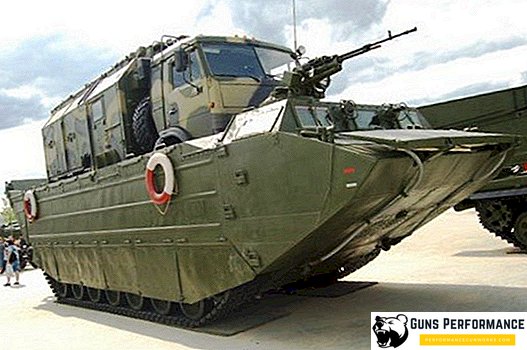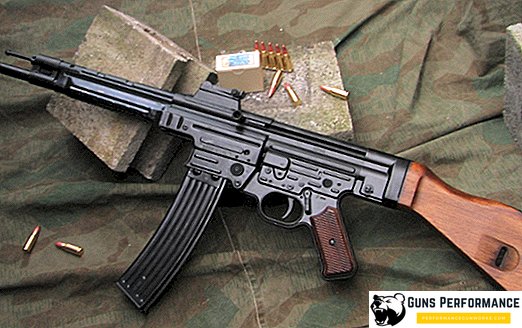Despite the growing importance of aviation on the field of modern combat, artillery is not losing ground and retains its role as an effective means of defeating any targets, from infantry to fortifications. One of its most important types are self-propelled artillery installations (ACS). They are often used for fire support of troops on the battlefield, for artillery preparation before the assault on enemy positions, as well as for mining dangerous areas of defense and destroying enemy minefields. The introduction of the latest technology provides self-propelled artillery mounts high accuracy, rate of fire and mobility. The importance of ACS in the realities of the typical regional conflict of our time has increased significantly.
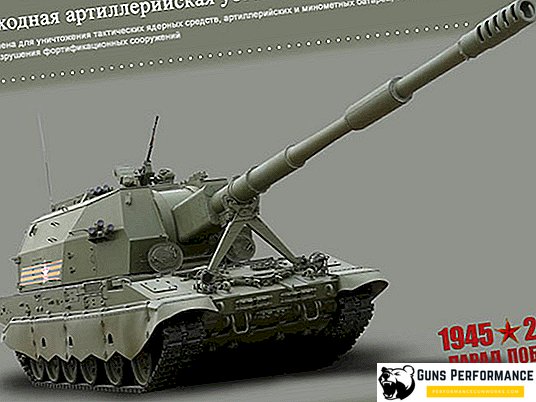
One of the most awaited innovations, which the general public could see one of the recent Victory Parades in Moscow, was the newest self-propelled artillery installation 2S35 "Coalition-SV". This machine has a long and difficult history of creation.
Story
In 1989, the self-propelled howitzer 2S19 Msta-S was put into service. In its main characteristics, it was not inferior to foreign analogues. But over time, everything changed: the firing range of foreign self-propelled guns increased to 40 kilometers (with some ammunition), and the Petrel Research Institute (Nizhny Novgorod) began to develop a new artillery system, called Msta-SM. In parallel with them, the specialists of this research institute developed several multi-barreled artillery systems.
In early 2003, the designers already had sufficient experience to create a double-barreled howitzer self-propelled system. In 2004, its tests began, as a result of which they decided to abandon the double-barrel layout. Installing two trunks at once on one machine seriously complicated and increased the cost of construction. It was these works that gave rise to a new project, later called the Coalition.
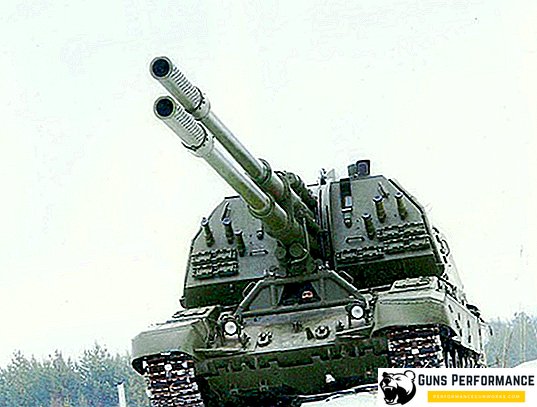
Officially, the project started in 2006. In 2013, the first two prototypes were made, and the next - the first batch of SAU of ten cars.
By 2020, this 152-mm self-propelled howitzer should replace outdated self-propelled guns "Acacia" and "Msta".
Design
SAU "Coalition-SV" built on the basis of the main Russian tank T-90. In the future, they want to transfer it to the base of the Armata universal combat platform, as well as to create a wheeled variant.
The ACS is made according to the tower scheme and the device of its case as a whole repeats the layout of the T-90 case. The case consists of three compartments: power, combat and control compartment. The department of management is located in the forward part of the hull, where the seat of the driver-mechanic and machine control devices is located. Nearby are places for the gun commander and gunner.
The fighting compartment is completely uninhabited, it is located in the middle part of the body. Loading and the formation of the shot is completely automatic, without the participation of the crew. Charging is separate. The crew is completely separated from the combat compartment, which increases its safety, as well as protects it from powder gases. The control module is computerized, all information is displayed. The places of the commander of the vehicle and the gunner are equipped with control systems for the execution of operations. In their places, the commander and the gunner can receive information about the surrounding terrain, target the gun, take target indications using a special communication channel, and calculate corrections for firing. All this they can do at any time of the day.
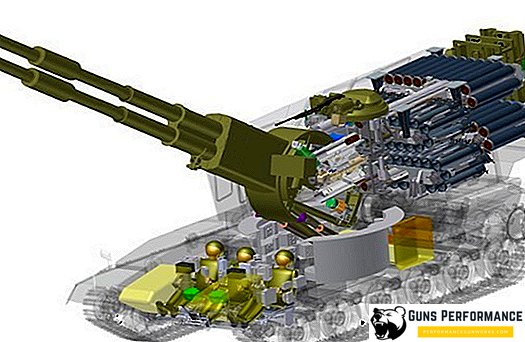
In the stern of the machine is the power section with the engine and transmission. Threaded howitzer caliber 152 mm located in a rotating turret. The tower is also located system for setting smoke interference and sensors warning of laser irradiation.
At the muzzle of the gun there is a muzzle brake. The gun is automatically charged, while the projectile can be loaded into the gun at any angle of inclination: the barrel should not be lowered to the loading line. The loading mechanism is pneumatic. The shot is made due to the microwave charge.
The loading mechanism has significantly increased the rate of fire of the Coalition-SV. The rate of installation is 1.5 times higher than the ACS "Msta" and "Acacia". Ammunition ammunition ranges from 50 to 70 shells. The ACS can use high-explosive fragmentation projectiles, guided projectiles, the flight of which can be corrected using information from the GLONASS system, as well as special projectiles: smoke, lighting, incendiary.
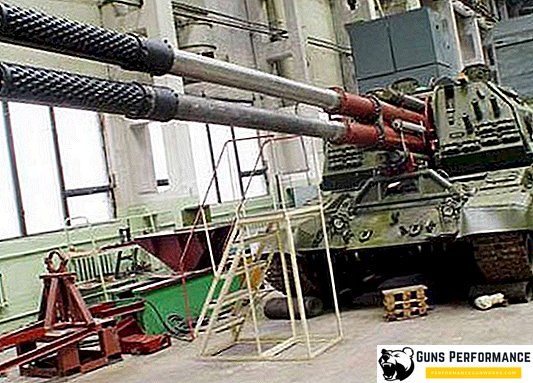
The ACS is capable of shooting at a distance of up to 70 kilometers. "Coalition-SV" can work in the "squall of fire" mode, during which a large number of shots are fired at the same target, but along different trajectories, thanks to which the shells hit the target almost simultaneously. The machine can be prepared for firing as soon as possible and leave the position one minute after its completion.
For the "Coalition-SV" was created a special machine based on KamAZ, which can transport and unload ammunition. To replenish the BC with this machine takes only 15 minutes.
On the roof of the tower SAU is a machine gun installation, with a machine gun CORD. It is remotely controlled, its angle of elevation is 75 degrees. The installation has a guidance system and a laser rangefinder.
Artillery case armor - steel anti-bullet.
"Coalition" plan to put into service in the brigade of the Land Forces of the Russian Federation.
Machine modifications
The ACS is now based on the T-90 tank, but some experts believe that the Armata’s universal platform will be much better suited for this purpose. Nevertheless, there are several other options - for example, an all-terrain vehicle KAMAZ-6560 can be used as a base for a self-propelled unit. The patency of the wheeled variant is likely to be lower than the tracked one, however, it should be much more mobile and seriously win in speed.
There is information about experiments with charge for this instrument. A new charge created on the basis of a substance with a large energy capacity can significantly increase the firing range. But official confirmation of this has not been.
There is another version of this installation. It consists of two articulated machines: the first is the ACS, and the second is a transport-charging machine, which the unit carries on a trailer. Thanks to this scheme, the time of loading the artillery installation is reduced several times and the complex's permeability is significantly increased.
It is also planned to install SAU "Coalition-SV" weapons on warships.
Specifications
Full information about the car is not yet available.
| Name | "Coalition-SV" | |
| A country | RF | |
| Mass, tons | 55 | |
| Chassis | T-90, in the future - T-14 | |
| Caliber, mm | 152 | |
| Barrel length | <52 | |
| Ammunition, pcs. | shells | <70 |
| charges | <300 | |
| Loading | Auto. | |
| Rate of fire, shots per minute | More than 10 | |
| Range of fire | <40 | |
| Fire Flurry (MRSI) | + | |
| Crew | Until 3 | |
| TZM | + | |
| Max. speed | At the level of a promising tank | |
| Power reserve, km | ||


